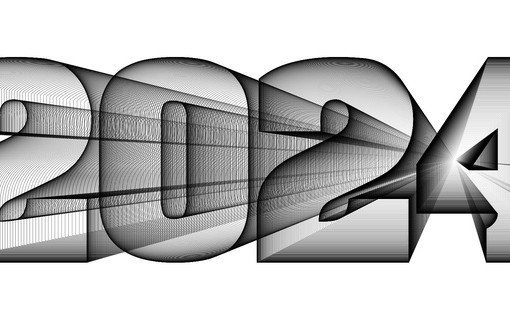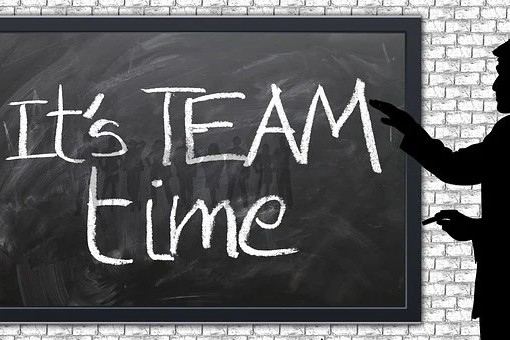There is no doubt that the work at home reaction to the Covid-19 pandemic will permanently alter the workforce in many industries. This is now accepted knowledge and I wrote about it in One Lasting Effect Covid-19 Will Have On Business back in April.
While healthcare is a “hands on” business and nothing is done until someone physically touches the patient, many of the support functions are now being done from outside the facility –primarily in the employee’s home.
Billing, medical coding, recruitment, benefits administration, transcription, and many other services are being done off-site and this is likely to continue. This has caused me to ponder the effect that this will have on the organizational culture. Will it remain the same?
How much of culture is defined by social interactions? Probably a lot if not most. How will it be altered? Will there be two cultures–one for the on-site employees and another for the distance staff? How much of our culture is related to being physically present with one another?
How many of our rewards and recognition programs depend upon person-to-person interactions? Does working alone or interacting via electronic means change this? How do we measure productivity? Is our performance management program up to the challenge?
Organizational culture is a huge topic that I can not adequately cover in one, or even several posts. It is critically important. For a basic understanding of organizational culture, I would refer you to an article in Harvard Business Review by Groysberg, Lee, Price, and Yo-Bud Chang, entitled “The Culture Factor“. It will give you a thorough overview of culture.
Culture defined
They define culture as “the tacit social order of an organization: It shapes attitudes and behaviors in wide-ranging and durable ways. Cultural norms define what is encouraged, discouraged, accepted, or rejected within a group. When properly aligned with personal values, drives, and needs, culture can unleash tremendous amounts of energy toward a shared purpose and foster an organization’s capacity to thrive.”
They also identify 8 distinct cultural styles. You may want to see where your organization fits. Here is how they describe them in the above linked article:
- Caring focuses on relationships and mutual trust. Work environments are warm, collaborative, and welcoming places where people help and support one another. Employees are united by loyalty; leaders emphasize sincerity, teamwork, and positive relationships.
- Purpose is exemplified by idealism and altruism. Work environments are tolerant, compassionate places where people try to do good for the long-term future of the world. Employees are united by a focus on sustainability and global communities; leaders emphasize shared ideals and contributing to a greater cause.
- Learning is characterized by exploration, expansiveness, and creativity. Work environments are inventive and open-minded places where people spark new ideas and explore alternatives. Employees are united by curiosity; leaders emphasize innovation, knowledge, and adventure.
- Enjoyment is expressed through fun and excitement. Work environments are lighthearted places where people tend to do what makes them happy. Employees are united by playfulness and stimulation; leaders emphasize spontaneity and a sense of humor.
- Results is characterized by achievement and winning. Work environments are outcome-oriented and merit-based places where people aspire to achieve top performance. Employees are united by a drive for capability and success; leaders emphasize goal accomplishment.
- Authority is defined by strength, decisiveness, and boldness. Work environments are competitive places where people strive to gain personal advantage. Employees are united by strong control; leaders emphasize confidence and dominance.
- Safety is defined by planning, caution, and preparedness. Work environments are predictable places where people are risk-conscious and think things through carefully. Employees are united by a desire to feel protected and anticipate change; leaders emphasize being realistic and planning ahead.
- Order is focused on respect, structure, and shared norms. Work environments are methodical places where people tend to play by the rules and want to fit in. Employees are united by cooperation; leaders emphasize shared procedures and time-honored customs.
I don’t care what your culture is and one is not better than the other. Organizations also have micro-cultures. You may see your organization as primarily described by one of the 8 styles above but see a different culture at play in a specific department such as Finance, or nursing.
Regardless of the cultural style look at how dependent each is on employee interaction. Each style is described by several traits. Then, a statement describes the work environment followed by what factors are unifying for the employees.
How will the culture of your organization be changed if there no longer exists a single, defined work environment? The work environment may now include an infant, phone interruptions, deliveries, etc. and will be different for each employee working from home.
How will a sense of cultural unity be maintained with employees at a distance? Regardless of the style you choose to examine, both these questions need to be answered by HR.
HR’s Responsibilities
What responsibilities and involvement does HR have for the culture of the organization? These are probably best described in an article by SHRM entitled, “Understanding and Developing Organizational Culture“.
It describes HR’s role as:
- Being a role model for the organization’s beliefs.
- Reinforcing organizational values.
- Ensuring that organizational ethics are defined, understood and practiced.
- Enabling two-way communications and feedback channels.
- Defining roles, responsibilities and accountabilities.
- Providing continuous learning and training.
- Sustaining reward and recognition systems.
- Encouraging empowerment and teams.
- Promoting a customer-supplier work environment.
- Recognizing and solving individual and organizational problems and issues.
Some of these are pretty straight-forward and may be the same regardless of the work location of the employee. Some may require modification or revision.
Basic Questions
Are the organizational ethics clearly defined to home-based employees? Are there any potential issues in working alone? Are there issues with the work and the home environment being merged?
How is two-way communication encouraged? If communication defaults to written texts/emails, is this satisfactory?
Will there be different responsibilities and accountabilities for the work-at-home employee? Timekeeping? Attendance? Productivity monitoring?
Does HR have adequate rewards and recognition systems? We have a lot a rewards based upon patient care and “nice” personal interactions. Will these leave out the work-at-home employee or do the rewards need to take into account the video/telephonic interactions they have?
How measurable are our performance management and reporting systems? Are our performance appraisals based upon objective data that applies whether the manager is “present or not”? Do we have objective productivity data?
How is continuous learning provided to distance employees? Will they be required to periodically be physically present for learning or other meetings?
How is teamwork promoted?
I don’t have the answers and they will be different for each organization based upon the culture. They are questions that HR and all of management should be considering. If culture is important to your organization (and it should be), then maintaining it should be proactively addressed.





